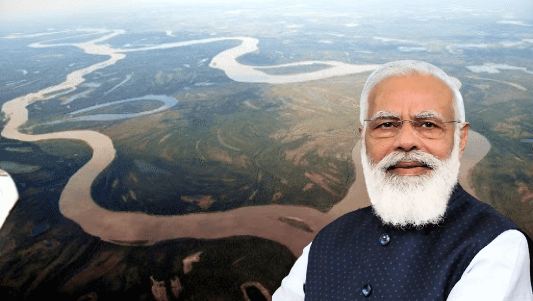On World Water Day, Prime Minister Narendra Modi launched the ‘Jal Shakti Abhiyan: Catch the Rain’ programme in order to implement water conservation as a people’s movement. Also, taking the vision of Prime Minister Atal Bihari Vajpayee forward, “historic Memorandum of Agreement between the Union Minister of Jal Shakti and the Chief Ministers of Madhya Pradesh and Uttar Pradesh to implement the Ken Betwa Link Project, the first project of the National Perspective Plan for interlinking of rivers” was signed.
The interlinking of rivers is being launched with a renewed vigour under the Union Ministry of Jal Shakti in collaboration with states. The plan to link rivers goes back to the 1970s when, Dr. K.L. Rao, a dam designer, and the then irrigation minister, proposed the “National Water Grid”. But the idea was put on the backburner by successive governments.
The Atal Bihari Vajpayee-led NDA government adopted the idea and started working on it, but before it could implement the project, they lost power to the UPA. The next UPA government which was supported by the Left parties could not take the project further because social activists were against it. The social activists were of the view that the project may be disastrous in terms of cost, potential environmental and ecological damage, water table, and unseen dangers inherent in tinkering with nature.
The Ken-Betwa project envisages fulfilling the water needs of the Bundelkhand region, which straddles both Uttar Pradesh and Madhya Pradesh. The National Water Development Agency (NWDA) had identified 30 links (16 in the peninsular areas and 14 rivers in the Himalayan region) for the preparation of feasibility reports.
The Union Jal Shakti Minister, during the launch of the project, emphasized the need for water availability to the poor and vulnerable for sustainable development. “We need to make water available to the most vulnerable. At the same time, we need to build resilient systems that provide long term solutions for sustainable use of water,” said Gajendra Singh Shekhawat, Minister of Jal Shakti.
Recently, a report released by the government policy tank NITI Aayog said that the cities of the country will face water scarcity if water conservation and management are not be done properly. The interlinking of rivers will help the cities in easy access to clean water. China faced the same problem a few years back with its northern part suffering from drought and southern part suffering from floods. The Chinese government built the Grand Canal to link the Yangtze River and Yellow river to solve the problem.
Today, the Grand Canal is one of the world heritage sites and it ended the drought and flood problem to a large extent. It also gave agricultural prosperity to China. India needs to learn from its eastern neighbours and complete the linking of rivers as soon as possible for the prosperity of the people of the country.
The Indo-Gangetic plain of India has rivers that have water flowing through it 365 days a year because the source of these rivers is in the Himalayas. On the other hand, the rivers in the Deccan plateau have water only for a few months a year. If the rivers of the plains and plateau could be connected, then neither the plains will suffer from floods nor will the plateau face droughts.
